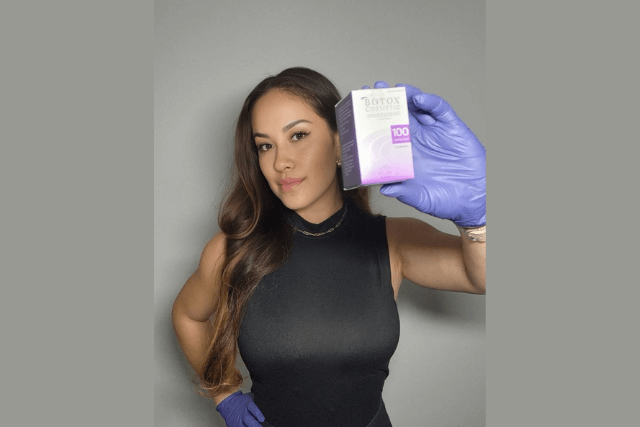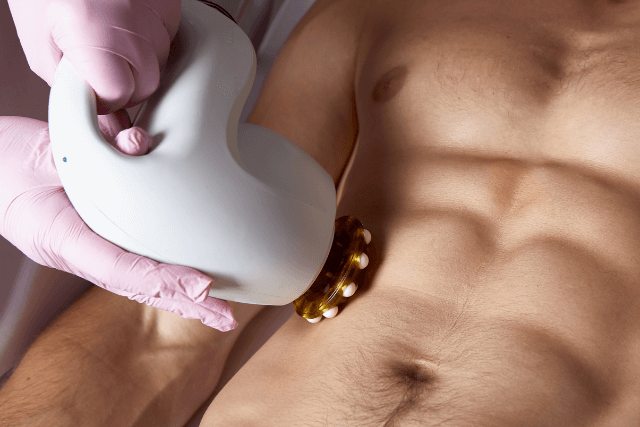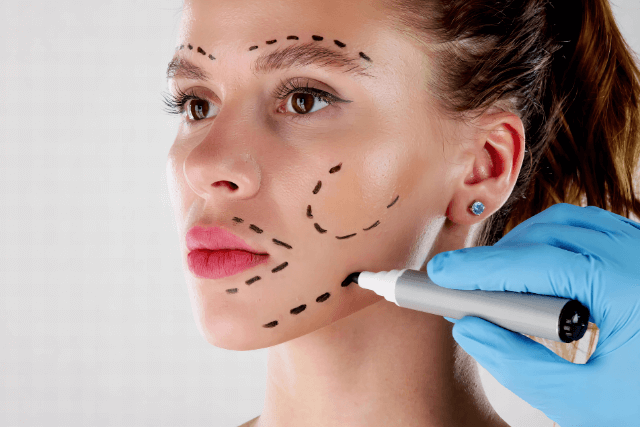What is Blepharoplasty? Blepharoplasty, commonly known as eyelid surgery, is a cosmetic procedure designed to improve the appearance of the eyelids. It involves the removal or repositioning of excess skin, muscle, and sometimes fat around the eyes to correct sagging or drooping eyelids. Although it is often considered an aesthetic procedure, blepharoplasty can also provide functional benefits, such as improving vision by removing obstructive skin. In this blog, we will discuss the eyelid surgery procedure, its benefits, and what to expect before, during, and after the surgery.
Understanding Blepharoplasty
Blepharoplasty refers to eyelid surgery aimed at correcting imperfections or signs of aging around the eyes. Over time, the skin around the eyes can become loose and sag, leading to a tired or older appearance. Additionally, fat can accumulate under the eyes, contributing to puffiness. In some cases, drooping eyelids may also obstruct vision, which may require surgical intervention.
The Goals of Blepharoplasty
The main goals of blepharoplasty are to:
- Improve the aesthetic appearance of the eyes by eliminating excess skin, fat, and muscle.
- Restore the natural contour of the eyelids.
- Enhance vision if sagging eyelids obstruct sight.
- Reduce the appearance of puffiness or under-eye bags.
In essence, blepharoplasty aims to rejuvenate the eye area, creating a more youthful, refreshed look.
Types of Blepharoplasty
There are two main types of blepharoplasty: upper eyelid surgery and lower eyelid surgery. The procedure can be customized based on individual needs, such as addressing sagging, excess skin, or puffiness.
Upper Blepharoplasty
Upper eyelid surgery primarily targets excess skin and fat on the upper eyelids, which can cause drooping or hooded eyelids. This procedure can help lift the upper eyelid and remove the redundant tissue. In some cases, this excess skin may interfere with peripheral vision, which upper blepharoplasty can address.
Lower Blepharoplasty
Lower eyelid surgery addresses puffiness, under-eye bags, and excess skin that can accumulate below the lower eyelids. This procedure focuses on removing or redistributing fat, tightening skin, and smoothing out wrinkles. Lower blepharoplasty can give the lower eye area a more youthful and rested appearance.
The Blepharoplasty Procedure
Now that we understand what blepharoplasty is and the two main types, let’s explore the procedure itself.
Consultation
Before undergoing blepharoplasty, a consultation with a qualified surgeon is essential. During this appointment, the surgeon will evaluate your eye area, discuss your goals, and determine whether you’re a good candidate for the surgery. They may also assess your medical history and any underlying conditions that could affect the surgery or recovery.
The Surgery
Blepharoplasty is typically performed under local anesthesia with sedation, though general anesthesia may be used in certain cases. The surgeon makes small incisions in natural creases of the eyelids, ensuring minimal visible scarring. The procedure typically lasts between 1 and 3 hours, depending on whether both the upper and lower eyelids are being treated.
- Upper Eyelid Surgery: The surgeon removes excess skin, fat, and muscle through the incision along the natural fold of the upper eyelid. This restores a more youthful and open-eyed appearance.
- Lower Eyelid Surgery: For the lower eyelids, the surgeon may make an incision just below the lower lash line or inside the eyelid (transconjunctival approach) to remove or redistribute fat. Excess skin may also be trimmed to smooth the area.
Aftercare
Following the procedure, you will need to follow specific blepharoplasty aftercare guidelines to ensure a smooth recovery and optimal results. These guidelines typically include:
- Keeping the head elevated to minimize swelling.
- Applying cold compresses to reduce bruising.
- Taking prescribed pain medications or over-the-counter pain relievers as necessary.
- Avoiding strenuous activities for several weeks to allow the eyes to heal.
Benefits of Blepharoplasty
Blepharoplasty offers a variety of benefits, both cosmetic and functional. Whether you’re considering the surgery for aesthetic purposes or to improve your vision, the advantages of this procedure are significant.
1. Enhanced Aesthetic Appearance
One of the most noticeable benefits of blepharoplasty is the improvement in the appearance of the eyes. Removing excess skin, fat, and muscle results in a more youthful, refreshed look. People often look less tired and more awake after the surgery. The procedure can also improve symmetry between the eyes, enhancing overall facial harmony.
2. Improved Vision
For some individuals, drooping eyelids can obstruct peripheral vision. This condition can make it difficult to see clearly, particularly in the upper field of vision. Blepharoplasty can help alleviate this issue by removing excess skin that blocks vision, thereby improving overall sight.
3. Reduction of Under-Eye Bags and Puffiness
Lower blepharoplasty specifically targets under-eye bags and puffiness, which are common signs of aging. By redistributing or removing the fat deposits, this procedure results in smoother, firmer skin under the eyes. As a result, individuals often appear more rested and youthful.
4. Long-Lasting Results
The results of blepharoplasty are long-lasting, with many patients enjoying the benefits for 10 to 15 years. Although the natural aging process continues, the improvements made through the surgery are typically permanent. With proper skincare and healthy habits, the effects can last even longer.
Recovery and Results
After blepharoplasty, most patients experience some swelling, bruising, and discomfort. However, these side effects typically subside within 1 to 2 weeks. The full results of the surgery may take several weeks to fully appear as the swelling continues to decrease.
Tips for a Smooth Recovery
Follow Aftercare Instructions: Adhering to aftercare guidelines, such as keeping your head elevated and avoiding strenuous activities, is crucial for a smooth recovery.
- Apply Cold Compresses: Using cold compresses during the first few days can help reduce swelling and bruising.
- Limit Sun Exposure: Protect your eyes from the sun by wearing sunglasses, as the skin around the eyes may be more sensitive after surgery.
- Avoid Smoking: Smoking can impede the healing process, so it’s important to avoid it during recovery.
Final Results
It takes about 1 to 3 months for the final results to become visible as swelling fully resolves. Most patients notice a significant improvement in their eyelid appearance, with smoother, younger-looking eyes. The positive results of blepharoplasty tend to last for many years, with most patients being satisfied with the outcome.
Risks and Considerations
As with any surgical procedure, blepharoplasty carries some risks, though they are generally rare. These risks include:
- Infection
- Scarring
- Dry eyes or irritation
- Vision changes
- Asymmetry or uneven results
It is essential to work with a board-certified plastic surgeon who specializes in eyelid surgery to minimize these risks. Be sure to discuss your concerns with your surgeon during your consultation.
Who is a Good Candidate for Blepharoplasty?
Blepharoplasty is ideal for individuals who are in good overall health and have realistic expectations about the results. Ideal candidates may experience:
- Drooping or sagging eyelids that impair vision.
- Puffiness or bags under the eyes.
- Wrinkles or excess skin around the eyelids.
It is important to note that patients should have healthy skin and not suffer from conditions that could interfere with the healing process, such as severe dry eye or certain eye diseases.
Conclusion: Is Blepharoplasty Right for You?
In summary, blepharoplasty is an effective and long-lasting solution for those looking to improve the appearance of their eyelids and rejuvenate their overall facial appearance. Whether you’re concerned about sagging eyelids that affect your vision or puffiness under your eyes, blepharoplasty offers numerous benefits. By understanding the procedure, its benefits, and recovery process, you can make an informed decision about whether eyelid surgery is right for you.
Before deciding, always consult with a certified surgeon who specializes in eyelid surgery to ensure you are a good candidate for the procedure. By taking the necessary steps before and after the surgery, you can enjoy the youthful, refreshed look that blepharoplasty offers for many years to come.





